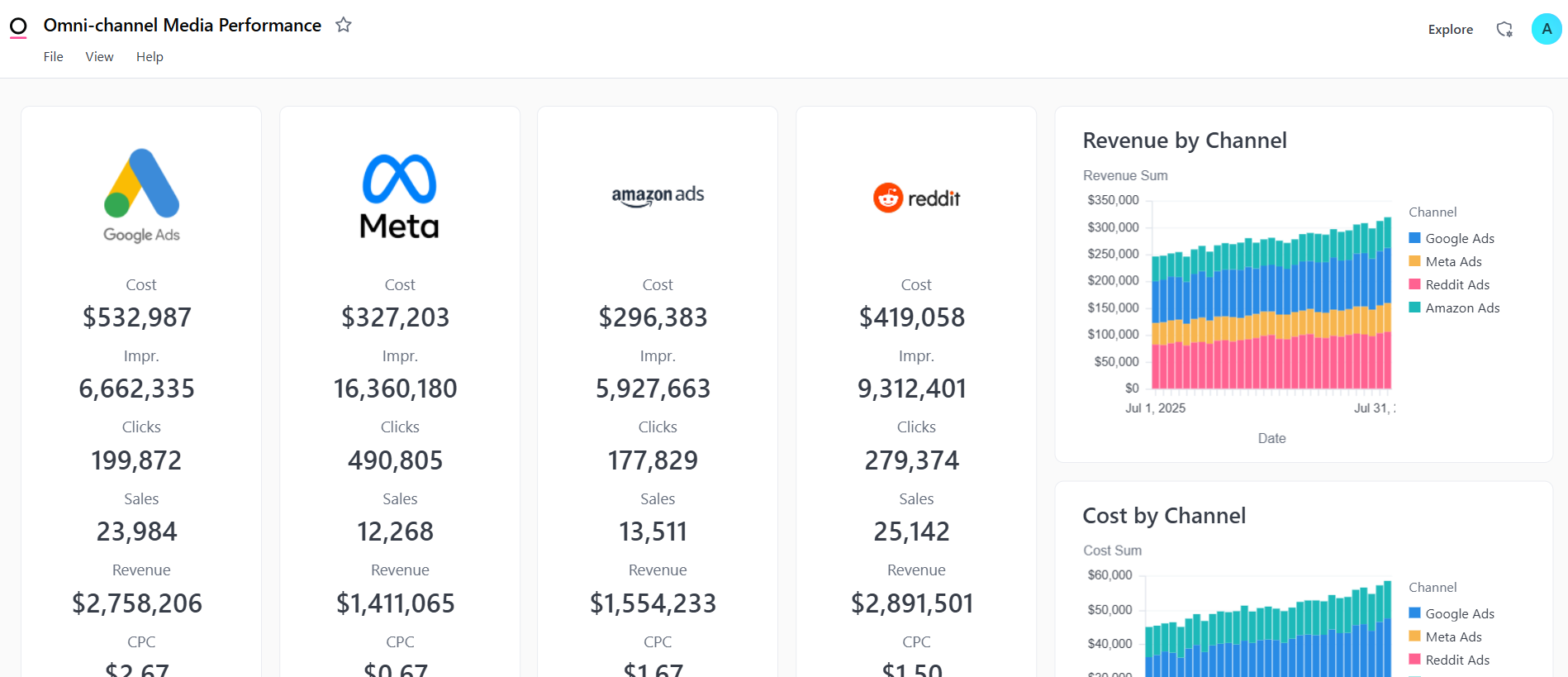Looker vs Tableau vs Power BI vs Omni: Which One Is Right for You?
Looker, Tableau, Power BI, and Omni are leading BI tools, each with unique strengths. This comparison explores their features, usability, integrations, and ideal use cases based on business needs, technical expertise, and data strategy priorities.

In today’s data-driven world, the right business intelligence (BI) platform can help you unlock insights, automate workflows, and scale smarter. With so many options available, four tools consistently stand out: Looker, Tableau, Power BI, and now Omni. While all offer robust analytics and visualization capabilities, each has its own strengths depending on your business size, technical skills, and long-term goals.
Let’s explore how they stack up.
Looker: Built for Modern Data Teams
Overview: Now part of Google Cloud, Looker is a BI platform focused on centralized data modeling through its proprietary language, LookML. It’s designed for organizations that want to maintain strict control over metrics and data definitions across teams.
Strengths:
- Centralized Logic: Define metrics once and reuse them across all dashboards.
- Cloud-Native: Seamless integration with BigQuery and other cloud warehouses.
- Governance: Ideal for enterprises needing strong data consistency and governance.
Consider If: You have a technically advanced data team and need a scalable, code-based approach to BI.
Tableau: The Visualization Powerhouse
Overview: Acquired by Salesforce, Tableau is renowned for its beautiful and highly interactive dashboards. It offers a visual, drag-and-drop experience that empowers analysts and business users alike.
Strengths:
- Best-in-Class Dashboards: Stunning visualizations with rich interactivity.
- Ease of Use: Minimal training needed for business users to get started.
- Vibrant Community: Extensive resources, forums, and user support.
Consider If: Data storytelling is your priority and your team includes a wide range of technical abilities.
Power BI: Best Value for Microsoft Ecosystems
Overview: Power BI is Microsoft’s answer to modern BI. It’s tightly integrated with Excel, Teams, and Azure, making it a natural choice for organizations already using Microsoft products.
Strengths:
- Affordable: Powerful features at a lower cost than most competitors.
- Excel-Friendly: Familiar interface and logic for Excel users.
- Seamless Integration: Works hand-in-hand with Microsoft 365 and Azure.
Consider If: You're cost-conscious and deeply embedded in the Microsoft stack.
Omni: Built by the Team Behind Looker, Designed for Action
Overview: Omni is the newest player, but with serious pedigree. Built by former Looker employees, it combines the modeling rigor of Looker with a user-friendly experience and modern workflow automation capabilities. Omni takes BI a step further by enabling users to not only explore data but generate action-ready datasets that can trigger workflows, all without writing a single line of code.
Strengths:
- Looker DNA: Inherits best-in-class data modeling features from the original Looker vision.
- No-Code Automation: Easily generate and use datasets in workflows without needing engineering help.
- Designed for Teams: Combines the flexibility of self-serve tools with robust governance.
Consider If: You want the power of Looker without the code complexity, and you're ready to turn analytics into real-world actions fast.

Final Verdict: Which Should You Choose?
- Choose Looker if you prioritize centralized modeling, governance, and have a strong technical team.
- Choose Tableau if your organization thrives on interactive visual dashboards and data storytelling.
- Choose Power BI if you want a cost-effective, Microsoft-integrated BI tool with wide accessibility.
- Choose Omni if you're looking for the next evolution of BI, blending Looker-like modeling with no-code workflow automation and modern UX.
Each of these tools is powerful in its own right. But if you're looking for something that combines enterprise-grade modeling, ease of use, and automation out of the box, Omni is well worth exploring.
